Local Government in Navan 1469-2014
See also: The Corporation and Navan's Mace and Seal
Local Government in Navan, 1469-2014
At the September 2014 meeting of Navan & District Historical Society, Mr. Peter Connell, recalled the history of local government in Navan.
The lecture coincided with the end of local government in the town after a period of almost one thousand years, with the dissolution of the Navan Town Council in May 2014.
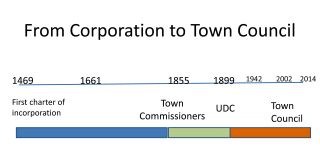
The first Borough of Navan was created by Hugh de Lacy around 1169. Navan was given to the Nangles by de Lacy and he bestowed on the first Nangle the title "Baron of Navan”. De Lacy was an ambitious Norman who had a stormy relationship with King Henry. De Lacy, fearing for his position set about making himself secure and created his own mini state in Leinster as a precaution. If Trim was his administrative capital, Drogheda his port, Navan was the commercial capital. He realised the importance of the town as it straddled both the Boyne and Blackwater. He ordered Nangle to surround the town with a wall, parts of which still survive. The Nangles levied taxes for the support of the town, so in many ways they can be regarded as the first councillors.
With the passing of time the power of the Nangles declined and the town seemed to have declined also. King Henry VI, (1421-1471) ordered the town Corporation to collect taxes for the upkeep of the walls and streets.
Navan's 1st Charter 1469: The next king, Edward IV (1461-1471), granted the town its first charter. At the top was the Portreeve or Mayor, under the Portreeve were the Burgesses (councillors), who were elected by the Freemen. Navan was to have 12 Burgesses and only they could elect the Portreeve. Elections were to be held every year on Michaelmas Day, 13th September.
The ordinary people of Navan were excluded as only freemen had the vote and their number was strictly controlled by the burgesses. One of the main qualifications for freemen seems to have been loyalty to their political allies.
The Corporation then appointed a Town Clerk who carried out the day to day work. Other appointments were two Sergeants of Mace who carried the mace as a sign of the portreeve’s authority.
Under King Edward’s Charter, a most important job was that of craner. He collected taxes for the running of the town. The main flaw in King Edward’s charter was that it did not specify where the portreeve and burgesses should live. They for the most part, lived in their estates outside the town. Why then did they bother to control Navan?
Navan returned two M.P.s to the Irish House of Commons. Thus we find that the Preston, Ludlows and the Metges dominated politics in Navan.
Navan's 2nd Charter was granted by Henry VII in 1494.
Navan's 3rd Charter was granted by James I in 1623. Robert Plunket was the Portreeve. Catholics were excluded from membership of the Corporation.
Navan's 4th Charter was granted by Charles II 1673.
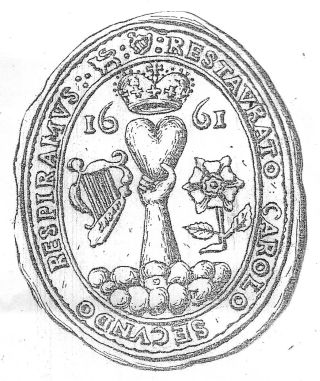
In 1661 Charles 11 presented Navan
with an official seal with the inscription
“Restaurato Carlo Secundo Respiramus”.
Navan's 5th Charter: In 1689 James 11 gave Navan a new charter which was of little effect as he was defeated at the Battle of the Boyne.
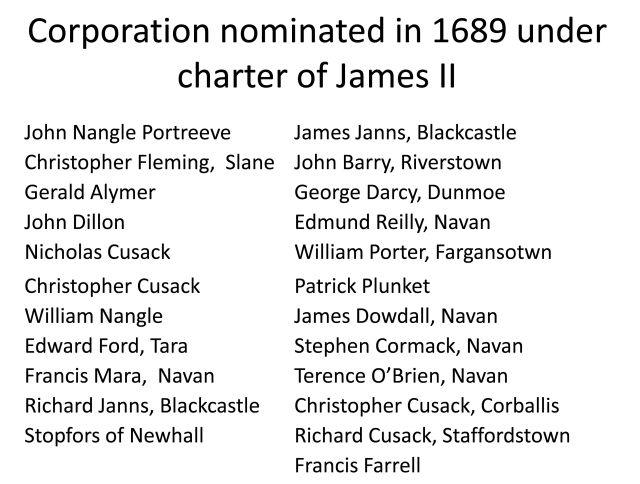
The members of the corporation soon realised that they had control of great wealth as the town had the Commons, an area of 1200 acres which was the property of the people. By tradition, everybody had the right to graze their cattle on it. It should have been a source of great wealth to the town if managed properly and revenues generated from rents should have been used to improve the town. Corruption reached all levels. Even the corporation members complained about it. In 1746 it was recorded “Everybody was evading taxes, the corporation made an order to repair the holes in town walls to prevent goods coming and going without paying taxes”.
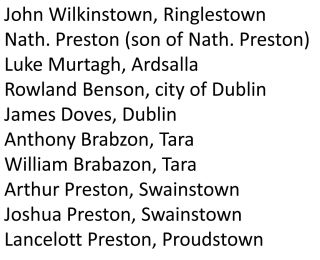 A letter to the parish clerk in Ardbraccan, 1754, declared, "These gentlemen (Burgesses) have constantly opposed all schemes for its (Navan) improvement, and particularly the navigation of the Boyne and a bridge over that river by which communication has been opened to the town and a large tract of improved and inhabited country.” In 1767 the worst forms of corruption appeared. Those in the "know“ were in a position to get favours from their friends in power. The valuable land of the Commons began to pass into private hands.
A letter to the parish clerk in Ardbraccan, 1754, declared, "These gentlemen (Burgesses) have constantly opposed all schemes for its (Navan) improvement, and particularly the navigation of the Boyne and a bridge over that river by which communication has been opened to the town and a large tract of improved and inhabited country.” In 1767 the worst forms of corruption appeared. Those in the "know“ were in a position to get favours from their friends in power. The valuable land of the Commons began to pass into private hands.
(above left) Freemen mid 18th century Navan. Added to this were Conolly and John Fay, who, although they were made Freemen of the town (and didn't pay taxes), as Catholics, they could not be members of the Corporation.
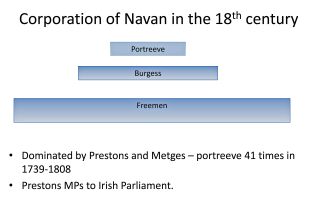
The Rev. Beaufort decided to build a new glebe and was given 40 acres on the Commons. The glebe was never constructed but neither was the land returned to the Corporation. A Mr. Barry then applied for land to build a school and accordingly some acres on the Commons were granted to him. The school was never built and neither was the land returned. The greed now spread to the Prestons and Ludlows and they added parts of the Commons to their estates. No questions were asked about the rights of the ordinary people. The Commons was reduced to a mere 100 acres and no answers given. The last attempt to acquire corporation land in Navan was carried out by none other than F.D. Hamilton, the Portreeve. He got ownership of land on the Fair Green which he acquired for housebuilding. Navan was not the only town in which such conduct was being carried out and Daniel O’Connell was putting pressure on the Whigs to reform local government. In 1832, the government acceded to O’ Connell's request and set up the Perrin Commission to investigate what was going on in the local councils. Perrin was a very able barrister and did not suffer fools gladly. Wrongdoers in public office were coming under pressure. F. D. Thompson died in 1832 so Perrin was unable to question him.
One may ask how did Navan survive with such corruption going on? Westminster realised that corruption was wholesale and they got around this by working through boards, Board of National Education, Board of Works, Boards of Guardians etc. These boards were independent of local councils and grants were made available to them, rather than the corporations.
In 1828 the parliament in Westminster made money available for street lighting, path repair and refuse disposal and called on corporations to appoint commissioners to take charge of the expenditure of the said grants. Navan corporation, in a fit of chagrin, refused to take part and declared that "they could find no suitable people in Navan to appoint.” Was this the sting of a dying wasp? The Perrin Commission arrived in Navan and inspected the activities of the corporation. Their report was damning, "There is not at present a common council or any select body on this corporation. In fact the corporation is virtually extinct, so much so that its existence was scarcely known to some of the inhabitants”.
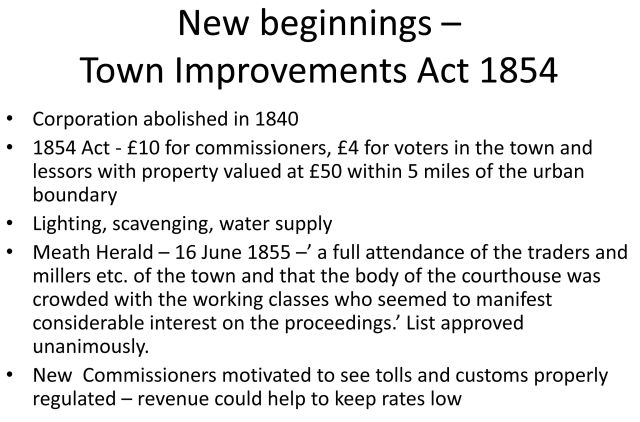
As a result of this damning report the government decided to replace the corporation with a new body Navan Town Commissioners. Any inhabitant with property of rateable valuation of £10 could sit on the council. Any citizen of the town with property of rateable valuation of £4 could have a vote. Overnight, over 300 people received the vote. The elections in 1855 reflected the change.
James Mullen was the first chairman of Navan Town Commissioners. George Florry , a prominent O’Connellite, was appointed Town Clerk. All resided in the town and were representative 0f the various classes of people. No member of the old aristocracy was elected; their power was broken. Under the new body Navan began to make rapid strides.
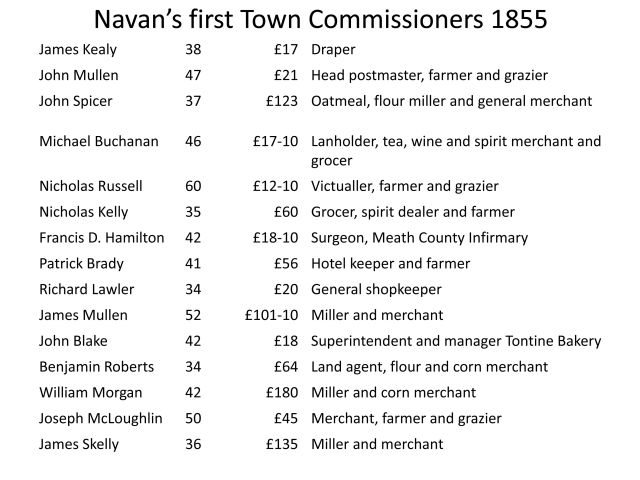 (above) James Kealy and James Skelly were both avctive in the Repeal movement
(above) James Kealy and James Skelly were both avctive in the Repeal movement
In 1854 property owners had to install proper sanitation. A sanitary inspector was also appointed. In 1870 a new sewage scheme was laid in Ludlow Street and Academy Street. Navan Gas Company supplied public lighting to the town. In 1896 The Town Commissioners decided to supply piped water to the inhabitants.
On 2nd July 1896 the Meath Chronicle reported on the last meeting of the Grand Jury and the setting up of Meath County Council.
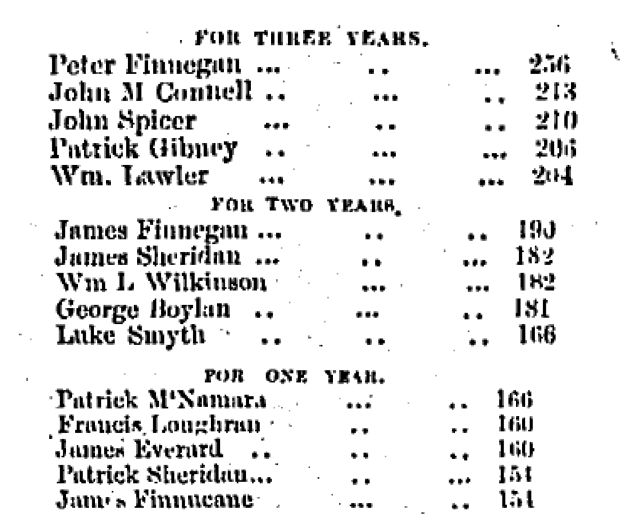
(Above) Navan's first Urban District Councillors 1899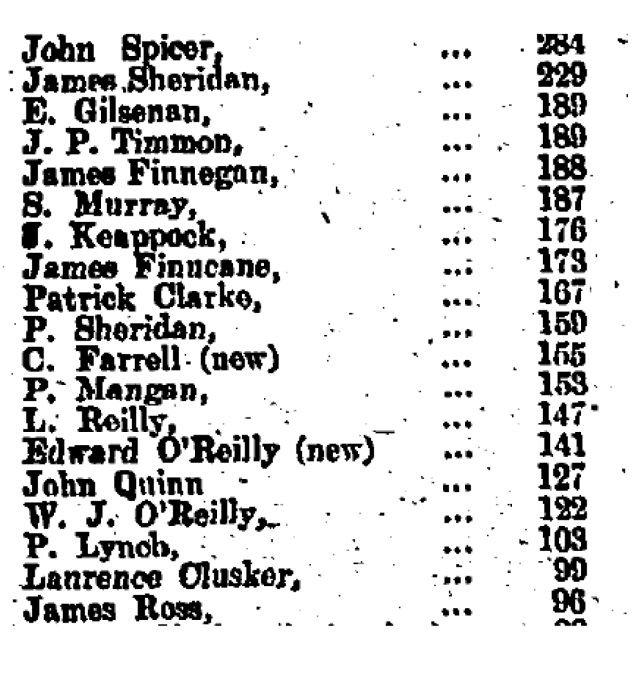
(Above ) Navan Town Council 1908 (numbers represent votes)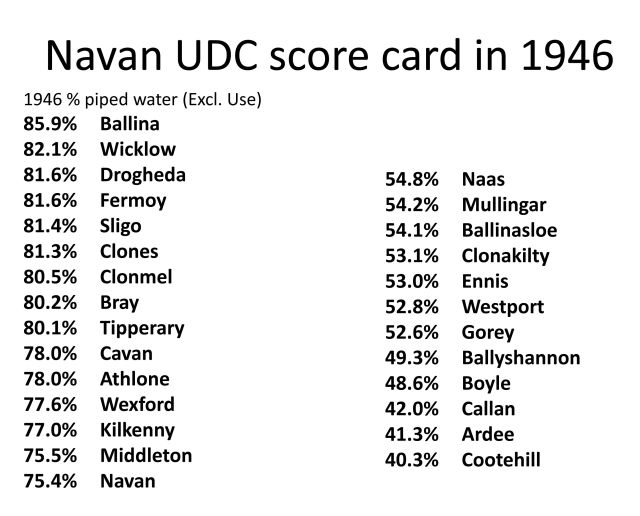
Navan's rating with regards piped water supply in 1946 compared to other urban centres.
Navan's Town Clerks
John Foley, 1935; Thomas Keogh, 1963-73
Michael Flannery, 1939-40; Teresa Mc Fadden, 1973-5;
P. McGee, 1945-7; Don Curtin, 1975-9;
Eamonn Garry, John Carroll, 1980;
Michael Callanan, 1948-54; John O'Donoghue, 1980-98
Peter Hayden, 1954; Fergus Muldoon, 1998-2008;
Brian McNally, 1955-9; Shane Donnelly, 2008-2012
Anthony Duggan, 1959-62 Alan Rogers, 2012-14.
Navan and Meath were now back in the hands of the ordinary people. There is no doubt that after the Perrin Commission change was rapid, and for the better. The fact that Navan had councillors on the ground to bring the problems of the citizens to the proper authorities ensured that Navan was a better place in which to live and well prepared to take its place in the new Ireland.
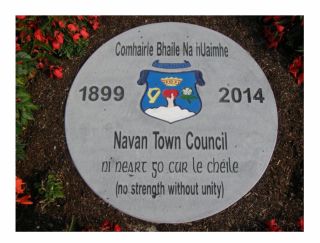
********
Some Sources:
Navan Corporation Minute Books 1739-1808, National Library of Ireland
Navan Town Commission, Urban District Council, Town Council - Meath County Library, Navan
Meath Chronicle Archives
Peter Connell, The Land and People of Meath 1750, (Dublin), 2004
Peter Connell, Changing forces shaping a Nineteenth Century Irish Town, (Maynooth), 1988
Noel E. French, Navan by the Boyne, (Kilmessan), 2002
Crossman, Local Government in Nineteenth Century Ireland, (Belfast), 1994
Canon Ellison, The Waters of the Boyne & Blackwater, (Dublin), 1983